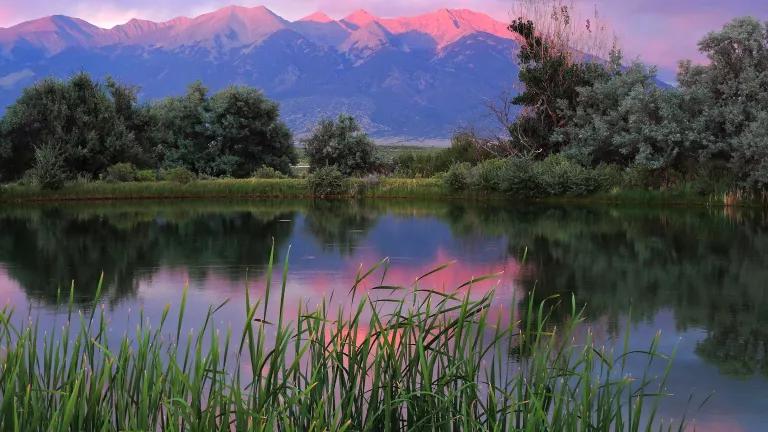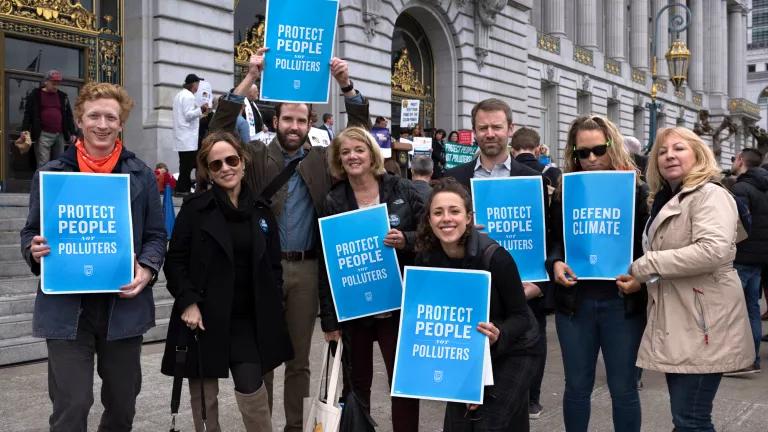
Amidst everything going on in the world these days, it’s easy to miss that the Metropolitan Water District of Southern California (Met) is in the process of setting the course for Southern California’s water future, through a process called the Integrated Resource Plan (IRP). The IRP is intended to be a road map that will guide Met’s investments over the next 25 years, helping the Board of Directors to make choices about how to plan to meet demand for water in an environmentally responsible and cost-effective way. Encouragingly, Southern California is well positioned to thrive for the next few decades with significantly less imported water than today, by investing in local water supply projects that create drought resilient water supplies and create good paying local jobs. Indeed, a recent report from the PPIC found that "significant declines in water demand have reduced pressure on supplies during normal and wet years for many agencies, making reliability for future droughts the primary concern,” and also concluded that many local water supply projects are cost-competitive with imported water from the Delta and more will be cost-competitive in the future as the price of imported water increases.
But Met’s tunnel vision—and its failing business model—threaten the investments necessary for that more sustainable future.
Investments in local and regional water supply projects and improved water use efficiency are the future for meeting Southern California’s demand for water. As I discussed last year, Met’s own documents show that demand for imported water is declining and is likely to decline further as local and regional water supply solutions (like San Diego’s PURE Water project and Los Angeles’ regional water recycling project) come online. But these are real investments that require real money.
Thanks to improved water use efficiency, increased local supply projects, and reduced demand, last year Met was able to meet demand for imported water with a 35% State Water Project allocation—without dipping into storage. And this year, Met was able to meet demand without dipping into storage with only a 20% State Water Project allocation (382,000 acre feet), ending the year with record amounts of water in storage. Both of these allocations are significantly lower than the State's estimated average (62%) State Water Project allocation today.
Planning for a significant reduction in the amount of water imported from the Delta is essential for Met to make smart decisions in the IRP, as NRDC emphasized in comments to Met earlier this year. The scientific evidence is clear that reduced diversions are necessary to help protect and restore the health of the Bay-Delta estuary, its native fish and wildlife, the thousands of jobs that depend on healthy salmon runs, and water quality for farms and cities in the Delta. That’s particularly true as the effects of climate change become more severe.
As the State Water Resources Control Board moves to restart its long-overdue update of water quality standards for the Bay-Delta, modeling by the State Water Contractors shows that the combination of climate change (see scenario 2 below) and updated water quality standards that increase Delta outflow (55% of unimpaired flow, which is significantly less than scientists recommend) would reduce the State Water Project’s diversions from the Delta from 2.5 million acre feet per year to 1.9 million acre feet per year on average (see scenario 3B below). However, it's clear that investments in local and regional water supply projects in Southern California can more than offset Met’s reduced State Water Project supply from the Delta, while also creating good paying local jobs and providing a more drought resilient and sustainable water supply.

Source: Jacobs Engineering, Prepared for the State Water Contractors, Aug. 26, 2020 (link to full presentation)
However, the cost of the Delta Conveyance project stands as a significant impediment to Met investing in sustainable water supply projects, and the tunnel simply does not replace the need for these local and regional water projects:
- First, modeling by the State Water Contractors (see Scenario 3B below) shows that under updated water quality standards for the Bay-Delta that are weaker than scientists recommend (55% of unimpaired flow), State Water Project supply with the Delta Tunnel project would still be less than today, and the tunnel would only increase SWP supply from 1.9 MAF without a tunnel to 2.0 with a tunnel. While this is preliminary modeling (after all, there is no proposed project yet), it shows that the Delta tunnel is not likely to meaningfully increase water supply for Southern California.

- Second, the Delta Tunnel is very expensive, particularly now that the federal Central Valley Project is not participating in the project and many State Water Project contractors have opted out (including most of Kern County Water Agency, according to their internal financial documents). Met staff have indicated that Met could be responsible for meeting 65% of the total $15.9 billion cost ($10.335 billion), which could end up with Southern California paying around $450 million per year for 40 years for the cost of the tunnel (assuming low 3% interest rates and a 40-year borrowing term). By way of comparison, MWD paid $615M in State Water Project costs In FY 2020/21, so with the tunnel Met could easily be paying more than $1 billion per year to get less water than today from the State Water Project.
- Third, the cost of the tunnel comes on top of significant additional State Water Project costs that will increase the cost of imported water in Southern California. Earlier this summer, DWR gave a presentation for bond investors indicating that it anticipates borrowing $3 billion to pay for repair and maintenance of existing State Water Project facilities, including Oroville Dam. This would double DWR’s total current borrowing and will significantly increase the cost of imported water for State Water Project contractors. Similarly, Met’s 10-year financial projections (which explicitly do not include the long-term cost of a Delta tunnel) estimates that the cost of the State Water Project will increase from $615 Million per year in 2020 to over $900 Million per year in 2030. As a result, Met estimates that the cost of imported water is going to rise significantly, from $1,078 per acre foot in 2020 (Full Service Tier 1 treated rate) to $1,486 per acre foot in 2030 (assuming that Met’s water sales increase to 1.7 million acre feet per year in 2030). While it’s not clear if this includes Met’s share of the entire $3 billion in DWR borrowing, it is crystal clear that rates will increase significantly—and that’s before the substantial rate increases necessary to pay for the cost of the Delta Tunnel project. The increased cost of imported water makes local and regional water supply solutions even more affordable than imported water from Met.
In December, the Met Board will be asked to commit significant additional funding for the cost of the design and engineering of the Delta Tunnel Project. At this point it appears that the Board will be asked to commit an additional $31 Million to cover costs for the next two years (on top of the $50 Million already included in Met’s budget), as part of Met’s expected total costs of $221 Million for 2021-2024. This is money that is not in the current budget and that may require increasing water rates. Given the current economy, the significant costs, limited benefits, and substantial risks of the project, it is premature for Met to vote to spend additional money on the tunnel project. Recently, the Mayor of Los Angeles wrote to the Chair of the Board of Directors of Met, urging the Board to “consider delaying investments in the Delta until the IRP is complete, a new GM is on board and economic recovery is underway” as well as other recommendations to prioritize local water supply projects, protect ratepayers, and improve transparency at Met. We strongly agree and applaud the Mayor's leadership.
The Board of Directors of the Metropolitan Water District of Southern California should not approve spending additional money for designing the Delta tunnel in December, and the Board should wait to make these important funding decisions until after the IRP process is complete. Now is not the time to approve tens of millions of dollars in additional unbudgeted expenses that could increase rates, particularly for a project that doesn’t seem to pencil out and that threatens the funding needed to invest in sustainable water supply projects for Southern California.


